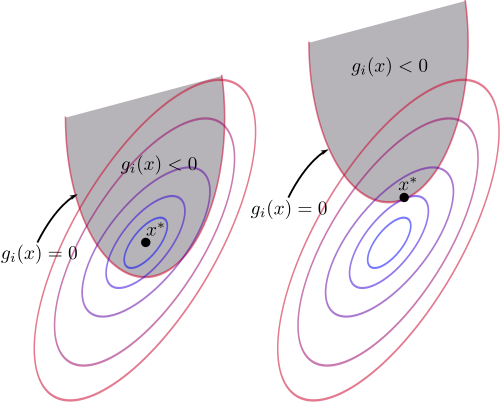KKT Conditions and Optimization Techniques
Slide: This lecture begins with an introduction to the Karush-Kuhn-Tucker (KKT) conditions, which are fundamental in constrained optimization. We will explore their geometric interpretation, derive the necessary conditions for optimality, and discuss their applications in solving optimization problems.
Lagrangian Multiplier
Optimization with Equality Constraints
Consider an optimization problem with equality constraints:
how to characterize the necessary conditions for the optimal solution
Geometric Insight
Consider a quadratic objective function with one linear equality constraint:

Lagrangian Function and Optimality Conditions
We introduce the Lagrangian function as a tool to characterize optimality:
The necessary conditions for optimality can be expressed as stationarity of the Lagrangian:
Lagrangian Relaxation
A Min-Max Interpretation
The Lagrangian function also leads to a powerful dual interpretation:
The original constrained problem is equivalent to the following min-max problem:
The Dual Problem and Weak Duality
Solution for
Under some conditions, equality holds, which means strong duality holds.
Uzawa's Method (Dual Ascent)
This leads to Uzawa's Method:
- Minimization (
-step): - Ascent (
-step): where is the step size.
KKT Conditions
General Constrained Optimization
Consider a general optimization problem with equality and inequality constraints:
the question does not change: how to characterize the necessary conditions for the optimal solution
Geometric Insight

Challenge:
- Directionality: On the boundary,
points towards the exterior of the feasible region. To prevent from pushing the point into an infeasible area, must have a component opposite to . - Activity Identification: The optimum may lie in the interior of the region with
or on the boundary with .
Summary

- Stationarity:
- Complementary Slackness:
- Primal Feasibility:
- Dual Feasibility: